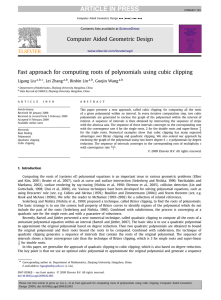Homework 1 Due Monday, Aug. 30 1. Find the cube roots of 8i. 2. If
advertisement
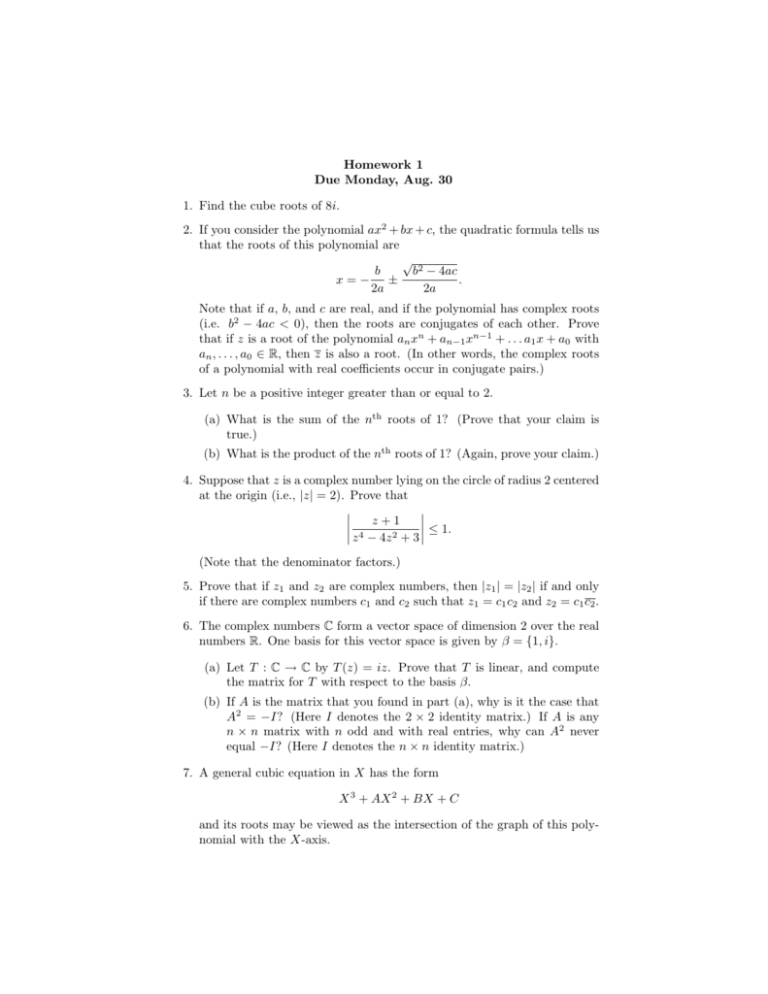
Homework 1
Due Monday, Aug. 30
1. Find the cube roots of 8i.
2. If you consider the polynomial ax2 + bx + c, the quadratic formula tells us
that the roots of this polynomial are
√
b
b2 − 4ac
.
x=− ±
2a
2a
Note that if a, b, and c are real, and if the polynomial has complex roots
(i.e. b2 − 4ac < 0), then the roots are conjugates of each other. Prove
that if z is a root of the polynomial an xn + an−1 xn−1 + . . . a1 x + a0 with
an , . . . , a0 ∈ R, then z is also a root. (In other words, the complex roots
of a polynomial with real coefficients occur in conjugate pairs.)
3. Let n be a positive integer greater than or equal to 2.
(a) What is the sum of the nth roots of 1? (Prove that your claim is
true.)
(b) What is the product of the nth roots of 1? (Again, prove your claim.)
4. Suppose that z is a complex number lying on the circle of radius 2 centered
at the origin (i.e., |z| = 2). Prove that
z+1
z 4 − 4z 2 + 3 ≤ 1.
(Note that the denominator factors.)
5. Prove that if z1 and z2 are complex numbers, then |z1 | = |z2 | if and only
if there are complex numbers c1 and c2 such that z1 = c1 c2 and z2 = c1 c2 .
6. The complex numbers C form a vector space of dimension 2 over the real
numbers R. One basis for this vector space is given by β = {1, i}.
(a) Let T : C → C by T (z) = iz. Prove that T is linear, and compute
the matrix for T with respect to the basis β.
(b) If A is the matrix that you found in part (a), why is it the case that
A2 = −I? (Here I denotes the 2 × 2 identity matrix.) If A is any
n × n matrix with n odd and with real entries, why can A2 never
equal −I? (Here I denotes the n × n identity matrix.)
7. A general cubic equation in X has the form
X 3 + AX 2 + BX + C
and its roots may be viewed as the intersection of the graph of this polynomial with the X-axis.
(a) Show that the inflection point of this graph occurs at X = − A3 .
(b) Deduce (geometrically) that the substitution X = (x− A3 ) will reduce
the above equation to the form x3 + bx + c.
(c) Verify part (b) by calculation.
8. In order to find a solution to the cubic equation x3 = 3px + 2q, do the
following:
(a) Make the inspired substitution x = s + t, and deduce that x solves
the cubic if st = p and s3 + t3 = 2q.
(b) Eliminate t between these two equations, thereby obtaining a quadratic
equation in s3 .
(c) Solve this quadratic to obtain the two possible values of s3 . By
symmetry, what are the possible values of t3 ?
(d) Given that we know that s3 + t3 = 2q, deduce that
q
q
p
p
3
3
x = q + q 2 − p3 + q − q 2 − p3 .
2


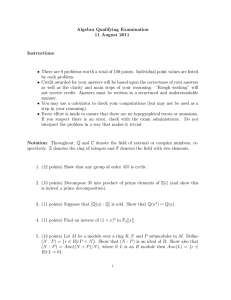

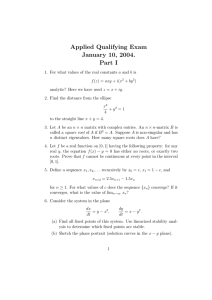

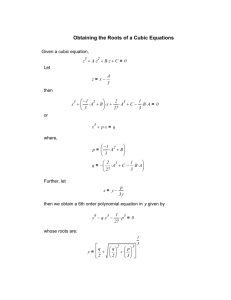

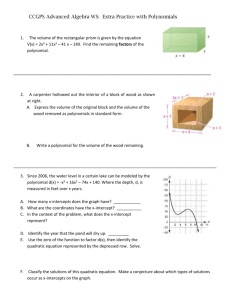
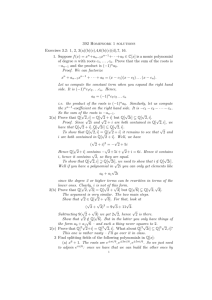
![is a polynomial of degree n > 0 in C[x].](http://s3.studylib.net/store/data/005885464_1-afb5a233d683974016ad4b633f0cabfc-300x300.png)
